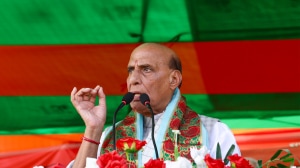The Wild Wild Westeros
What is it with the George R.R. Martin brand of enchantment?
A reader lives a thousand lives before he dies. The man who never reads lives only one, says a character in George R.R. Martins A Dance with Dragons. Any reader who wants to live a thousand lives needs only Martins Song of Ice and Fire series,of which Dance is the fifth novel. The character list at the end has well over a thousand people. Most have distinct and memorable appearances,family trees,convictions,tics. You also visit a dozen cities,each with a different atmosphere,architecture,ruling elite and style,not to mention a comprehensive,and often contested,history; there are twice that many castles,most of them carefully drawn,some of them startlingly original creations in structure and backstory; and there are half a dozen aspirants to a throne,with differing claims,characters and ideologies,as well as supporters,strengths and methods. And this extraordinarily detailed and compelling world is built up around you while you hardly notice because you will be so immersed in what is a heart-stoppingly well-plotted set of books.
Ice and Fire was apparently very difficult to write. Unsurprising. Dance took six years during which many of Martins numberless fans began snarling at him in impatience,in some cases putting the words Finish the book,George to music. Their numbers have been swollen by viewers of HBOs 10-episode adaptation of the first book,which introduced the Seven Kingdoms of Westeros,and its gritty,medieval landscape to millions who rarely read fantasy fiction.
Dance is clearly a middle book,the equivalent of the central 30 minutes of a 90-minute thriller,in which things are being set up for a climax. In its first half,you can discern authorial mechanisms even beneath Martins dense plotting. Each chapter is told from the point of view of one of 16 or so people,allowing Martin to build complex,morally grey characters. Here,for example,we are re-introduced to a character who vanished from the series early on,and whom many had grown to detest; but,over the course of the book,he wins us back. The point-of-view chapters also allow Martin to indulge in a weakness for cliffhangers that is bound to irritate those who worry they might have to wait another six years to figure out what happened to characters they have become deeply invested in.
It is impossible to read this book without reading the earlier ones. Indeed,reviewing it is complicated by the fact that even a minor discussion of the plot could well spoil the experience of reading earlier books in the series,in which tremendous twists have famously caused readers to throw the books across the room in shock,and sometimes anger. (Trust me,you pick them up again.) Martin doesnt hesitate to kill off major characters,for example. His world is dangerous and war-torn,and we come to trust an author who admits that,in such worlds,the good and the honourable sometimes die and usually more quickly.
Storytelling conventions are turned on their head: the hidden heir,born to rule,turns out to be a poor ruler; and the amiable protagonist on the classic heros quest arrives too late. In these books,intrigue trumps Tolkien-style enchantment; indeed,one character darkly hints that the legendary death of magic itself was a conspiracy.
But the most challenging aspect of Ice and Fire is that you are forced to pay attention. Dont put a gun on the stage if nobody ends up firing it, said Chekhov,and Martins descriptions are quite loaded with Chekhov-guns,as are his characters thoughts on history and folklore. In Dance,one folksong mentioned previously in passing is crucial to understanding how horrific and awesome a particular scene is; another song helps us conclusively identify a mysterious character at the end of one of the story arcs. Neither is spelled out explicitly: Martin expects his readers to keep up. And they do,even as some mysteries stretch across five books. (Fans: we get new information about Jon Snows parentage!)
Dance is a meditation on the limits of power,a questioning of the possibility of redemption,and quite a thrilling ride. It needs you to read closely,but forces you to read quickly. You are hyperventilating for most of the last 200 pages. After you read Ice and Fire,nothing you read afterwards will quite match it.







- 01
- 02
- 03
- 04
- 05
























